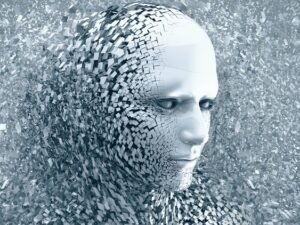
- Description
- Curriculum
- FAQ
- Reviews
Interested in the field of Machine Learning? Then this course is for you!
This course has been designed by a Data Scientist and a Machine Learning expert so that we can share our knowledge and help you learn complex theory, algorithms, and coding libraries in a simple way.
Over 1 Million students world-wide trust this course.
We will walk you step-by-step into the World of Machine Learning. With every tutorial, you will develop new skills and improve your understanding of this challenging yet lucrative sub-field of Data Science.
This course can be completed by either doing either the Python tutorials, or R tutorials, or both – Python & R. Pick the programming language that you need for your career.
This course is fun and exciting, and at the same time, we dive deep into Machine Learning. It is structured the following way:
-
Part 1 – Data Preprocessing
-
Part 2 – Regression: Simple Linear Regression, Multiple Linear Regression, Polynomial Regression, SVR, Decision Tree Regression, Random Forest Regression
-
Part 3 – Classification: Logistic Regression, K-NN, SVM, Kernel SVM, Naive Bayes, Decision Tree Classification, Random Forest Classification
-
Part 4 – Clustering: K-Means, Hierarchical Clustering
-
Part 5 – Association Rule Learning: Apriori, Eclat
-
Part 6 – Reinforcement Learning: Upper Confidence Bound, Thompson Sampling
-
Part 7 – Natural Language Processing: Bag-of-words model and algorithms for NLP
-
Part 8 – Deep Learning: Artificial Neural Networks, Convolutional Neural Networks
-
Part 9 – Dimensionality Reduction: PCA, LDA, Kernel PCA
-
Part 10 – Model Selection & Boosting: k-fold Cross Validation, Parameter Tuning, Grid Search, XGBoost
Each section inside each part is independent. So you can either take the whole course from start to finish or you can jump right into any specific section and learn what you need for your career right now.
Moreover, the course is packed with practical exercises that are based on real-life case studies. So not only will you learn the theory, but you will also get lots of hands-on practice building your own models.
And last but not least, this course includes both Python and R code templates which you can download and use on your own projects.
-
1Welcome Challenge!
-
2Machine Learning Demo - Get Excited!
See the power of Machine Learning in action as we create a Logistic Regression predictive model for a real-world marketing and sales use-case!
-
3Get all the Datasets, Codes and Slides here
-
4How to use the ML A-Z folder & Google Colab
-
5Installing R and R Studio (Mac, Linux & Windows)
In this video, Hadelin explains in details how to install R programming language and R studio on your computer so you can swiftly go through the rest of the course.
-
6EXTRA: Use ChatGPT to Boost your ML Skills
-
7Welcome to Part 1 - Data Preprocessing
-
8The Machine Learning process
Understand the steps involved in Machine Learning: Data Pre-Processing (Import the data, Clean the data, Split into training & test sets, Feature Scaling), Modelling (Build the model, Train the model, Make predictions), and Evaluation (Calculate performance metrics, Make a verdict).
-
9Splitting the data into a Training and Test set
Understand why it's important to split the data into a training set and a test set, how they differ and what they are used for.
-
10Feature Scaling
Two types of feature scaling: Normalization and Standardization. In the practical tutorials we focus on Standardisation and here we will discuss the intuition behind Normalisation.
-
11Getting Started - Step 1
-
12Getting Started - Step 2
-
13Importing the Libraries
-
14Importing the Dataset - Step 1
-
15Importing the Dataset - Step 2
-
16Importing the Dataset - Step 3
-
17For Python learners, summary of Object-oriented programming: classes & objects
A short written summary of what needs to know in Object-oriented programming, e.g. class, object, and method.
-
18Coding Exercise 1: Importing and Preprocessing a Dataset for Machine Learning
-
19Taking care of Missing Data - Step 1
-
20Taking care of Missing Data - Step 2
-
21Coding Exercise 2: Handling Missing Data in a Dataset for Machine Learning
-
22Encoding Categorical Data - Step 1
-
23Encoding Categorical Data - Step 2
-
24Encoding Categorical Data - Step 3
-
25Coding Exercise 3: Encoding Categorical Data for Machine Learning
-
26Splitting the dataset into the Training set and Test set - Step 1
-
27Splitting the dataset into the Training set and Test set - Step 2
-
28Splitting the dataset into the Training set and Test set - Step 3
-
29Coding Exercise 4: Dataset Splitting and Feature Scaling
-
30Feature Scaling - Step 1
-
31Feature Scaling - Step 2
-
32Feature Scaling - Step 3
-
33Feature Scaling - Step 4
-
34Coding exercise 5: Feature scaling for Machine Learning
-
35Getting Started
-
36Dataset Description
-
37Importing the Dataset
-
38Taking care of Missing Data
-
39Encoding Categorical Data
-
40Splitting the dataset into the Training set and Test set - Step 1
-
41Splitting the dataset into the Training set and Test set - Step 2
-
42Feature Scaling - Step 1
-
43Feature Scaling - Step 2
-
44Data Preprocessing Template
-
45Data Preprocessing Quiz
-
47Simple Linear Regression Intuition
The math behind Simple Linear Regression.
-
48Ordinary Least Squares
Finding the best fitting line with Ordinary Least Squares method to model the linear relationship between independent variable and dependent variable.
-
49Simple Linear Regression in Python - Step 1a
-
50Simple Linear Regression in Python - Step 1b
-
51Simple Linear Regression in Python - Step 2a
-
52Simple Linear Regression in Python - Step 2b
-
53Simple Linear Regression in Python - Step 3
-
54Simple Linear Regression in Python - Step 4a
-
55Simple Linear Regression in Python - Step 4b
-
56Simple Linear Regression in Python - Additional Lecture
-
57Simple Linear Regression in R - Step 1
Data preprocessing for Simple Linear Regression in R.
-
58Simple Linear Regression in R - Step 2
Fitting Simple Linear Regression (SLR) model to the training set using R function ‘lm’.
-
59Simple Linear Regression in R - Step 3
Predicting the test set results with the SLR model using R function ‘predict’ .
-
60Simple Linear Regression in R - Step 4a
Visualizing the training set results and test set results with R package ‘ggplot2’.
-
61Simple Linear Regression in R - Step 4b
-
62Simple Linear Regression in R - Step 4c
-
63Simple Linear Regression Quiz
-
64Dataset + Business Problem Description
An application of Multiple Linear Regression: profit prediction for Startups.
-
65Multiple Linear Regression Intuition
The math behind Multiple Linear Regression: modelling the linear relationship between the independent (explanatory) variables and dependent (response) variable.
-
66Assumptions of Linear Regression
The 5 assumptions associated with a linear regression model: linearity, homoscedasticity, multivariate normality, independence (no autocorrelation), and lack of multicollinearity - plus an additional check for outliers.
-
67Multiple Linear Regression Intuition - Step 3
Coding categorical variables in regression with dummy variables.
-
68Multiple Linear Regression Intuition - Step 4
Dummy variable trap and how to avoid it.
-
69Understanding the P-Value
-
70Multiple Linear Regression Intuition - Step 5
An intuitive guide to 5 Stepwise Regression methods of building multiple linear regression models: All-in, Backward Elimination, Forward Selection, Bidirectional Elimination, and Score Comparison.
-
71Multiple Linear Regression in Python - Step 1a
-
72Multiple Linear Regression in Python - Step 1b
-
73Multiple Linear Regression in Python - Step 2a
-
74Multiple Linear Regression in Python - Step 2b
-
75Multiple Linear Regression in Python - Step 3a
-
76Multiple Linear Regression in Python - Step 3b
-
77Multiple Linear Regression in Python - Step 4a
-
78Multiple Linear Regression in Python - Step 4b
-
79Multiple Linear Regression in Python - Backward Elimination
-
80Multiple Linear Regression in Python - EXTRA CONTENT
-
81Multiple Linear Regression in R - Step 1a
-
82Multiple Linear Regression in R - Step 1b
-
83Multiple Linear Regression in R - Step 2a
-
84Multiple Linear Regression in R - Step 2b
-
85Multiple Linear Regression in R - Step 3
-
86Multiple Linear Regression in R - Backward Elimination - HOMEWORK !
-
87Multiple Linear Regression in R - Backward Elimination - Homework Solution
-
88Multiple Linear Regression in R - Automatic Backward Elimination
-
89Multiple Linear Regression Quiz








